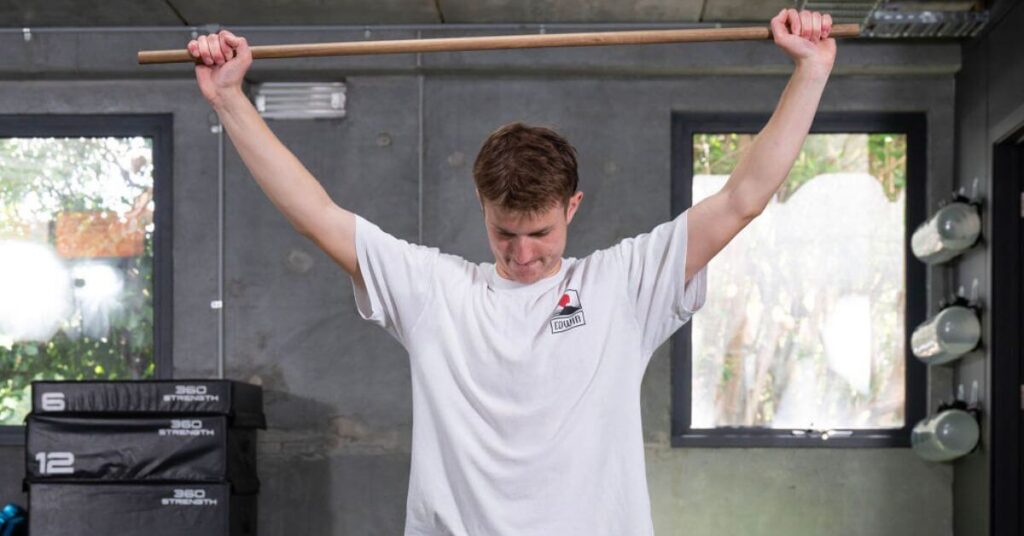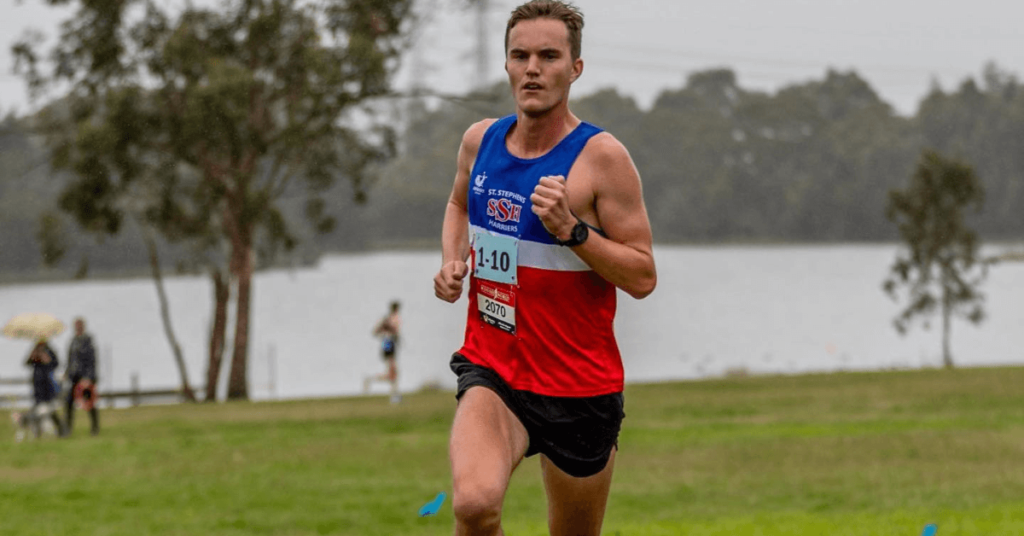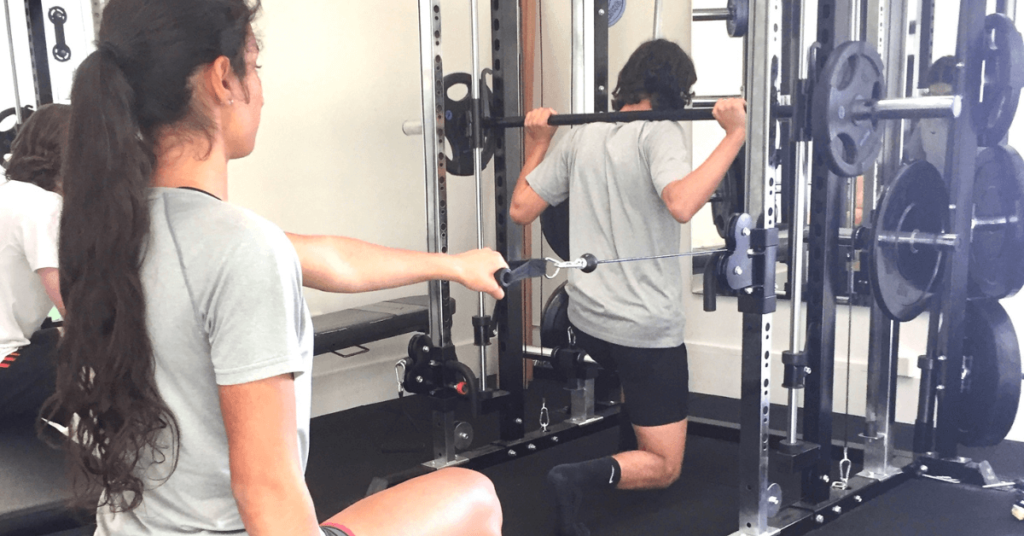Shoulder Pain Killing Your Lifts? Conquer It With These Proven Strategies Used By Sports Physiotherapists
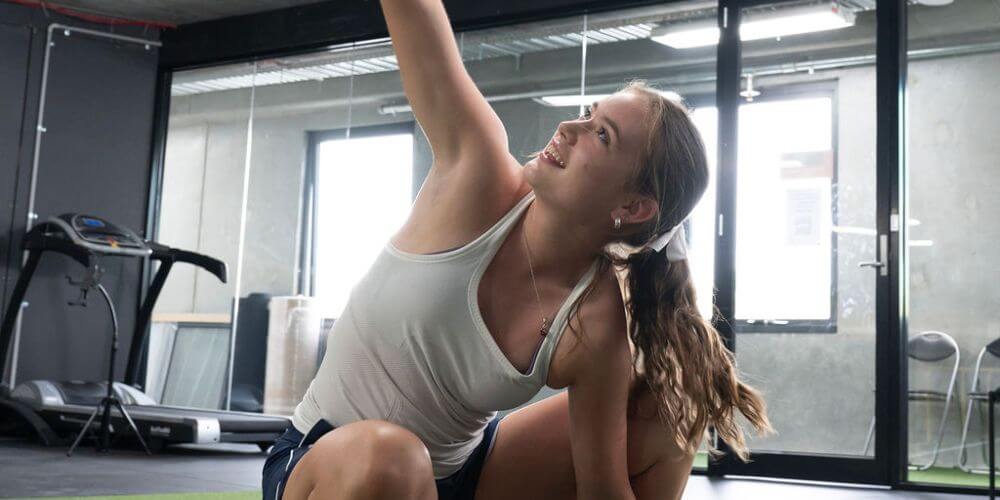
Ever crush a workout, feeling invincible, only to wake up the next day with a shoulder screaming in protest?
You’re not alone.
Shoulder pain is a common antagonist in the stories of many Australians and professional and amateur lifters, turning triumphant tales of strength and progression into chapters filled with frustration and limitations. Research shows that a significant proportion of the global population experiences shoulder pain daily, annually, and throughout their lifetime.
But before you resign yourself to a life of bicep curls and leg presses, hold onto your barbells! Conquering shoulder pain is possible, and it all starts with the right guidance and proven strategies. That’s where Run Ready comes in. We’re not just your average strength and training coaches; we’re also sports physiotherapy experts dedicated to helping people overcome pain and get back to their fitness goals. So, ditch the pain pills, grab your barbells, and get ready to crush those lifts pain-free with Run Ready!
The Gritty Guide to Weightlifter’s Shoulder Pain: Understanding Your Enemy
As a seasoned sports physio, I’ve seen countless Aussie weightlifters sidelined by shoulder pain. It’s frustrating, I know, especially when those plates are calling your name! But you don’t have to let this dampen your spirits and put a pause on your lifting! Understanding your shoulder’s anatomy and function can be the key to unlocking pain-free lifting and smashing your personal bests.
The Glenohumeral Joint: The Core of Shoulder Mobility
The shoulder joint, or the glenohumeral joint, is where the magic of movement happens for weightlifters. Imagine a ball (the head of your upper arm bone, or humerus) sitting in a shallow socket (the glenoid fossa of your shoulder blade, or scapula). This ball-and-socket configuration allows for an impressive range of motion, making it possible to lift, push, and pull from various angles. But remember, great power comes with responsibility!
Key Components of The Shoulder
- Glenohumeral Joint: The centrepiece of shoulder mobility, allowing your arm to rotate, lift, and extend in multiple directions.
- Ligaments and Joint Capsule: Think of these as the security guards of the shoulder joint, holding everything together while still allowing for movement.
- Rotator Cuff Muscles: A quartet of muscles (supraspinatus, infraspinatus, teres minor, and subscapularis) that are the unsung heroes of shoulder stability. They work tirelessly to keep the ball centred in its socket, ensuring smooth and safe movements.
As your physiotherapist, I want to ensure we all understand how to keep our shoulders in tip-top shape. Whether you’re going for a big bench press or reaching up to take a classic speccy on the footy field, it’s crucial to move properly and not overdo it. To be honest, we take our shoulders for granted; whether it’s throwing a right hook or hoisting up a trophy, we expect them to move every which way without complaint.
But our shoulders have a few tricky responsibilities. They need to flex and extend to wave hello or high-five a teammate, abduct and adduct to tackle an opponent, do lateral raises with dumbbells, externally and internally rotate to get their arms in the right position for a bench press or a snatch, and circumduct in circular motions to loosen up.
These exact movements transfer force and put pressure on the shoulder’s many intricate structures during weight training and sports. So we need to look after them! By focusing on mobility, stability, balanced strength, and controlled form, we can keep our shoulders functioning properly for swinging, lifting, and tackling for years to come.
The Stability-Mobility Trade-Off: Balancing Act of the Shoulder
In the high-stakes world of weightlifting, the shoulder joint emerges as a marvel of engineering, designed for extraordinary mobility at the cost of bony stability. This inherent trade-off is akin to a tightrope walker, balancing agility and strength, where the shoulder, in its quest for versatility, leans heavily on an ensemble of muscles, tendons, and ligaments to maintain its poise. Central to this balancing act is the rotator cuff—a quartet of muscles including the supraspinatus, infraspinatus, teres minor, and subscapularis—tasked with the monumental role of keeping the arm anchored in its socket, even as you hoist weights that challenge your limits.
I had a client, let’s name him ‘Aaron’, a seasoned weightlifter who’s been training with us at Run Ready. One day, amidst a routine lift with my supervision, he felt a sharp twinge in his shoulder—a signal often overlooked in the heat of the moment. This moment marks the beginning of his journey into understanding the delicate dance between stability and mobility in the shoulder. In the weeks following, with my guidance, Alex learned that the prowess of the shoulder doesn’t lie in its ability to bear weight alone but in its sophisticated support system. The rotator cuff, much like a skilled ensemble working behind the scenes, ensures that every lift, push, and pull is executed with precision. Through rehabilitative exercises specifically targeting these muscles, Alex not only recovers but also gains a newfound respect for the body’s intricate design.
Shoulder Injuries in Weightlifting: Insights from the Front Lines
Because of my experience working closely with weightlifters and other athletes, I’ve seen firsthand the impact of shoulder injuries on athletes’ careers and lives. These injuries, while common, are often preventable with the right knowledge and care. In this guide, we delve into the most prevalent shoulder injuries in the weightlifting world—rotator cuff tears, impingement syndrome, and AC joint injuries—bolstered by statistics and enriched with personal stories from those who’ve walked the path of recovery.
- Rotator Cuff Tears: The rotator cuff is crucial for the stability of the shoulder joint, comprising four muscles and tendons. Unfortunately, it’s also prone to injuries from repetitive overhead movements or sudden, acute trauma. Thirty-eight-year-old powerlifter John, a new patient of mine, recently suffered excruciating pain during his usual bench press workout. Upon examination, I discovered a complete supraspinatus tear requiring surgical repair and a lengthy rehab before returning to the gym. Studies show that shoulder injuries constitute 16.9% of all injuries in Olympic weightlifting, with the rotator cuff often at the epicentre.
- Impingement Syndrome: Imagine trying to squeeze through a tiny doorway—that’s what happens in impingement syndrome. The tendons get pinched between the shoulder blade and the bone, causing inflammation and pain, especially with overhead movements. Impingement is exceedingly common in middle-aged gym junkies who ask too much of their ageing shoulders. My patient, Lisa, despite her impeccable technique, still developed nagging anterior shoulder pain from one too many sets of lateral raises. With targeted massage, stretching, and exercise therapy, we successfully treated her impingement without resorting to cortisone injections. While exact figures are tricky, impingement is a common complaint among weightlifters. It’s like having a chronic case of overcrowded dance floors—not fun!
- AC Joint Injuries: This joint connects your collarbone to the shoulder blade, and it’s susceptible to sprains, strains, and even complete separations.
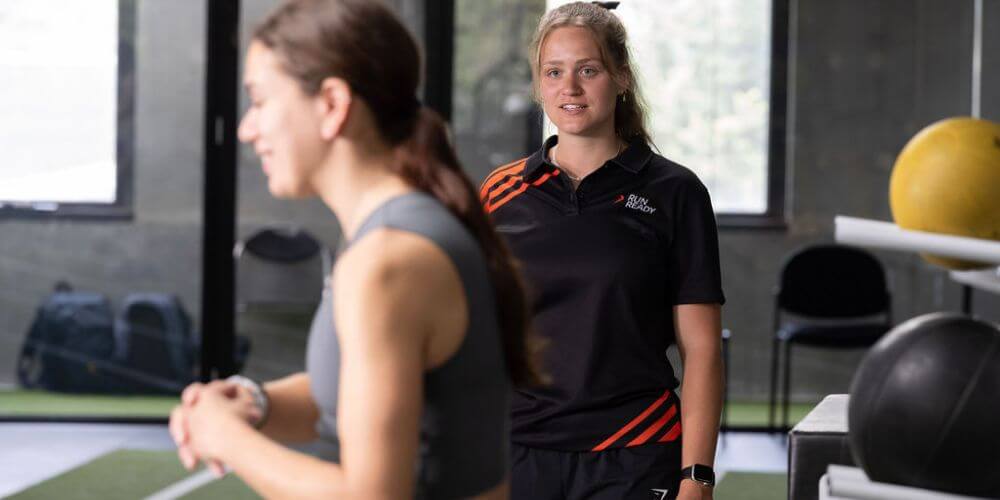
With injury rates ranging from 2.4 to 3.3 injuries per 1,000 hours of weightlifting training and 1.0 to 4.4 in powerlifting, the potential for harm is ever-present. These statistics highlight the importance of preventive measures and the reality of the risks involved in these sports.
Battling Shoulder Pain: Your Physio’s Toolkit for a Winning Comeback!
Shoulder pain can significantly impact your daily life and performance in activities, especially for athletes and individuals engaged in physical work or hobbies. Sports physiotherapists play a crucial role in diagnosing, treating, and preventing shoulder pain through a variety of evidence-based strategies. With the right approach, you can combat that pain and get back to doing what you love. Let’s dive into proven strategies to tackle shoulder pain head-on.
First Line of Defense: Immediate Action
When shoulder pain strikes, the first line of action involves immediate, simple steps to mitigate pain and prevent further injury. I always tell patients that the initial 72 hours after a shoulder injury are critical. Follow the RICE method straight away: Rest, Ice, Compression and Elevation. Avoid any activities that exacerbate pain, apply an ice pack for 15 minutes every few hours, use a tight bandage, and keep that arm propped up on pillows.
- Rest: Give your shoulder a break from activities that aggravate the pain. Remember, rest doesn’t mean total inactivity; gentle movement can help prevent stiffness.
- Ice: Apply ice packs for 15-20 minutes several times a day to reduce inflammation. Wrap the ice pack in a towel to avoid skin irritation.
- Seek Help: If the pain is severe, persistent, or accompanied by swelling or weakness, don’t hesitate to see a doctor or physiotherapist. Early diagnosis and treatment can speed up your recovery and prevent further complications.
Rehab Exercises: Building Strength & Flexibility
Rehabilitation exercises form the cornerstone of recovering from shoulder pain. These exercises aim to restore strength, improve flexibility, and ensure the stability of the shoulder joint. Here are some examples, but remember, always consult a professional for personalised guidance:
- Pendulums: Gently swing your arm in small circles, forward and backward, to improve mobility and blood flow. Start with pain-free movements and gradually increase the range.
- Shoulder shrugs Isometric exercises like shrugs strengthen your stabiliser muscles without moving the joint. Hold for 10 seconds, repeat 10 times, and feel those muscles work!
- Wall slides: Stand facing a wall, arms against it, and slowly slide your hands up and down. This improves shoulder blade movement and posture.
- Rotator cuff strengthening: Exercises like internal and external rotations with light weights or bands target those crucial rotator cuff muscles, keeping your shoulder stable.
Advanced Techniques: Beyond Basic Rehabilitation
Though complete recovery takes months for many shoulder injuries, certain advanced techniques can fast-track results when combined with disciplined rehab.
- Dry needling: Tiny needles target trigger points in muscles, easing pain and improving movement. It might sound scary, but research shows positive effects! Take Steve, a 32-year-old tradie who suffered a partial rotator cuff tear after an awkward catch playing weekend footy with his mates. Despite diligent rehab exercises at home, his shoulder lagged behind where it should have been, with lingering pain impacting his work as an electrician. That’s when I brought out the big guns – some targeted dry needling around Simon’s supraspinatus muscle belly. By triggering localised twitch responses in the area, we successfully reduced persistent trigger points and eased tensions still present after the injury. He regained those last few degrees of pain-free overhead range, allowing him to complete his sparky apprenticeship without limitations.
- Ultrasound therapy: Sound waves promote healing and reduce inflammation. Think of it as a gentle internal massage for your shoulder.
- Sports massage: Targeted massage techniques can improve soft tissue flexibility and blood flow, aiding in pain relief.
Maggie, a keen amateur weightlifter gunning for her first state competition, pushed a little too hard in training and inflamed her long-head biceps tendon. She rested completely for a few weeks but found her anterior shoulder still felt irritated when snatching even light weights. That’s when a combination of ultrasound therapy to encourage healing and regular sports massages made a world of difference. The targeted sound waves reduced inflammation, while the massage simultaneously improved circulation and further softened adhesions around her biceps. After a month of focusing on those modalities, Maggie made a successful return to the platform in the States and even snagged herself a new PR!
The journey to recovery from shoulder pain is a collaborative process between the patient and the physiotherapist, underpinned by an accurate diagnosis, tailored rehabilitation exercises, and, when necessary, advanced treatment techniques. Embracing these proven strategies can pave the way to overcoming shoulder pain and reclaiming an active, pain-free life. Remember, consulting a healthcare professional for personalised advice is paramount to navigating this journey successfully.
Preventative Measures: Building Bulletproof Shoulders
To forge shoulders resilient to the rigours of weightlifting, adopting comprehensive preventative strategies is crucial. By incorporating these preventative measures, you can build bulletproof shoulders and lift with confidence.
Essential Shoulder Prep: Warm-Ups and Mobility
At Run Ready, all our weightlifting clients know the key to bulletproof shoulders starts with proper warm-ups. We prescribe targeted mobility flows before any workout, focusing on the shoulders, thoracic spine, hips, and ankles. Band pull-aparts, arm circles, thoracic rotations, and inchworms gently wake up all the muscles and joints about to be load-bearing. We also coach our athletes to close each session with similar cooldown movements to flush metabolic waste, reduce soreness, and begin the all-important recovery process.
Maintaining Proper Form
The cornerstone of injury prevention lies in adhering to proper lifting forms. Incorrect techniques not only compromise your gains but also increase the risk of acute injuries and chronic wear. Focusing on maintaining a neutral spine and engaging the core during lifts can protect the shoulders from undue stress.
Progressive Overload Principles
The principle of progressive overload underpins all strength and muscle gains. But more is not always better! We encourage our clients to increase weights slowly and deliberately, ruled by rate of recovery, not ego. Males in particular often overload too rapidly, chasing gains but igniting shoulder issues. We prescribe submaximal training loads for many, focused on higher rep ranges with less strain per set. Patience pays off!
Rest and Recovery
We constantly reinforce active rest and recovery as cornerstones of progress, warning against pushing through moderate pain repeatedly. Inflammation indicates local muscle damage needing attention. We would much rather unload training for a week or two periodically than be forced into lengthy injury rehab down the track!
At Run Ready, We Tailor Our Approach To Meet Your Needs
Remember, individual needs vary significantly, and what works for one athlete may not suit another. If you encounter persistent shoulder pain or are unsure about your technique, consulting a fitness professional is advisable. They can provide personalised advice and adjustments to your routine, ensuring your shoulder health is never compromised.
By embedding these preventative measures into your routine—highlighting warm-up and cool-down importance, proper form, progressive overload, rest, and tailored training tips—you can build bulletproof shoulders capable of withstanding the demands of weightlifting. Partner with us at Run Ready and embrace these strategies to enjoy a healthier, stronger lifting journey.
Shoulder Pain FAQ
Dealing with shoulder pain can be both frustrating and debilitating, impacting your ability to perform everyday tasks and enjoy your usual activities. Understanding when to manage shoulder pain at home and when to seek medical advice is crucial for your health and well-being.
- Pain worsens or persists: If after two weeks, the pain isn’t improving or feels worse, a doctor can assess the cause and recommend the best course of action.
- Movement becomes difficult: Difficulty raising your arm, reaching behind your back, or experiencing significant limitations in movement warrants a doctor’s visit.
Seek Urgent Medical Attention:
- Sudden or severe pain: This could indicate a serious injury like a broken bone, dislocated joint, or torn ligament. Don’t delay seeking help.
- Loss of movement: The inability to move your arm or shoulder requires immediate medical attention.
- Deformity or swelling: If your arm or shoulder appears deformed or is significantly swollen, seek urgent medical attention.
- Persistent pins and needles or numbness: These symptoms can indicate nerve damage and require immediate evaluation.
- Fever or feeling unwell: If shoulder pain is accompanied by fever or general malaise, seek medical attention to rule out underlying conditions.
While it’s natural to attempt home remedies initially, recognising the signs that indicate the need for medical attention can prevent complications and promote a quicker recovery. If you’re uncertain about the severity of your pain or how to proceed, it’s always better to err on the side of caution and seek professional advice.
Waking up with a stiff and painful shoulder can disrupt your day and affect your ability to perform simple tasks. Fortunately, there are several steps you can take to alleviate the discomfort and prevent further issues.
- Take a Break: While complete inactivity isn’t ideal, avoid strenuous activities that exacerbate the pain. Opt for gentle movements like arm circles, neck stretches, and shoulder rolls to maintain some mobility.
- Heat or Cold Packs: Applying ice packs to the affected area for 15-20 minutes can help reduce inflammation and numb the pain. Alternatively, a warm compress may relieve stiffness by increasing blood flow. Experiment with both to see which provides better relief for your symptoms.
- Over-the-counter pain relief: Paracetamol or ibuprofen can help manage mild to moderate pain. Always follow dosage instructions carefully.
- Stand tall: Maintain good posture throughout the day. Stand tall with your shoulders relaxed and down, and avoid slouching when sitting. This can help reduce strain on your shoulder joint.
- Gentle Movement: Keeping your shoulder active is vital for maintaining mobility and preventing stiffness. Incorporate gentle shoulder exercises into your routine, focusing on movements that enhance flexibility without causing pain
While these self-care measures can provide relief, it’s important to monitor your progress. If your shoulder pain persists for more than a few weeks, worsens, or significantly impacts your ability to carry out your daily activities, seeking advice from a healthcare professional is advisable.
Experiencing shoulder pain doesn’t necessarily mean you have to put a full stop to all forms of exercise. Ceasing all physical activity could potentially worsen stiffness and reduce mobility over time. The key is to approach exercise with caution and adapt your routine based on the severity and cause of your pain.
- For minor aches that don’t intensify during movement, engaging in gentle exercises can be beneficial. Activities that maintain mobility without exacerbating your pain are ideal, as they can help prevent the joint from becoming stiff and support a quicker recovery. If the pain is intense or worsens with movement, it’s best to rest and seek professional advice from a doctor or physiotherapist.
- If the pain only occurs with certain exercises, avoid those movements while focusing on pain-free ones. Knowing the cause of the pain can help tailor your exercise accordingly.
- A healthcare provider, such as a physiotherapist like myself or a doctor, can offer valuable insights into the root cause of your shoulder pain. They can also recommend specific exercises that safely promote healing and strength without risking additional harm.


